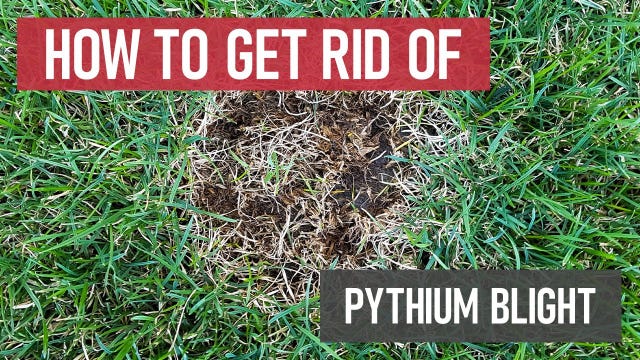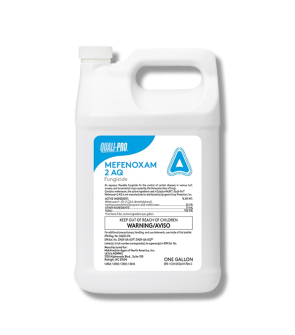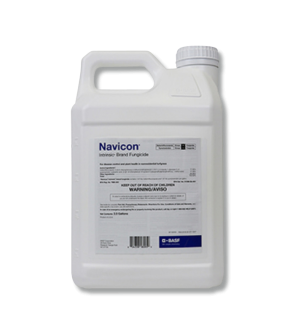Gain access to personalized product screening, the best pricing, rewards, and more!
Most Effective Products
Pythium Blight Control: How To Get Rid of Pythium Blight
This page is a general pythium blight control guide. Using the products and methods suggested, you will get control of the disease known as pythium blight. Follow this guide and use the recommended products; we guarantee 100% control of pythium blight.
Pythium blight, also known as cottony blight, spot blight, or grease spot, is a damaging turfgrass disease that can plague commercial or residential landscapes. Pythium blight affects grass in the summer when the temperature and humidity are considerably high.
Grasses infected with pythium blight often go undetected by lawn owners because, in the early morning, turf infected with pythium blight appears to look wet with dew and darkly colored green slime. The effect of pythium blight also makes infested grasses look greasy or oily.
When the weather becomes hotter, the pythium blight-infected grass begins to wilt at an alarming rate, turns brown, and then dries out before eventually dying. In other cases, a sign of the disease is white, cobwebby, mold-like growths of the fungus appearing on the leaves and blades of grass. In the worst case, the solution to fighting the disease is changing your grass entirely and starting from scratch, which may not be ideal with how time-consuming and expensive that would be.
If you have noticed pythium blight on your lawn, our DIY treatment guide will show you how to eliminate it with professional fungicides recommended by our lawn care experts.
Identification
Before treating it, you must be sure you are dealing with pythium blight and not some other disease or issue. Misidentification may lead to wrong treatment methods, wasting your time and money. Some symptoms are below to help you identify pythium blight.

- Pythium blight appears as reddish brown or dark gray spots on cool-seasoned grass. For warm-seasoned turf, these spots may appear purple or black. The spots will range in diameter from 1 to 6 inches.
- Parts of the infected leaves will appear wet or greasy and may feel slimy.
- When the leaves are wet and the humidity stays high, a gray fluffy mass of cottony mycelium may appear.
Refer to the image above and our description to help you identify pythium blight. If you are having trouble, contact us; we'll help you correctly identify your issue.
Inspection
After you have confirmed that you are dealing with pythium blight, you can move forward with an inspection. During this phase, you will locate where the pythium blight is thriving and how severe the issue is.

Where to Inspect
Pythium blight often grows in cool-seasoned and warm-seasoned turf.
Creeping Bentgrass, Annual Bluegrass, Rough Bluegrass, Kentucky Bluegrass, and Perennial Ryegrass are the grass types most vulnerable to damage from outbreaks of this disease.
What To Look For
When inspecting for pythium blight, look for discolored, slimy turf spots and the fungi’s cotton-like mycelium. Also, note areas on your property that maintain excessive moisture.
Symptoms of pythium blight become apparent during summer when temperatures rise. Signs of the disease first appear when evening temperatures become 68 degrees Fahrenheit. The disease thrives in areas with high humidity where the soil drains poorly and maintains excessive moisture.
Treatment
Before treatment, we suggest wearing the proper personal protective equipment (PPE) to prevent chemicals from coming in contact with your eyes or skin.
Our top recommendation for treating pythium blight is Mefenoxam 2AQ. Mefenoxam 2AQ is a systemic fungicide containing the active ingredient Mefenoxam. It is designed to eliminate various harmful fungal diseases, including Pythium blight.
Mefenoxam 2AQ works systemically and is a preventative fungicide but may be used on established Pythium blight to cure the disease.
Step 1: Measure and Apply Mefenoxam

Determine how much Mefenoxam 2AQ Fungicide you need by measuring the square footage of the treatment area. To find the square footage, measure the length and width of the treatment area in feet, then multiply them together (length x width = square footage).
To control pythium blight in established turf or newly seeded areas, apply 0.49 to 0.98 fl. oz. of Mefenoxam 2AQ Fungicide per 1 to 5 gallons of water per 1,000 sq. ft.
Mix the appropriate Mefenoxam 2AQ Fungicide in a handheld pump sprayer or backpack sprayer with water based on your measurement calculations. Then, apply the Mefenoxam 2AQ Fungicide mixture to the affected areas using a fan spray nozzle.
Step 2: Reapply

Repeat this application in 10- to 21-day intervals during weather periods favorable for disease development.
Use Mefenoxam 2AQ Fungicide on a 14-day schedule during prolonged conditions favorable for disease development.
For long-term control of pythium blight in areas using seed treated with this product, apply Mefenoxam 2AQ Fungicide 7 to 10 days after seeding.
Prevention
After eliminating the pythium blight outbreak, you want to ensure it doesn't return. Prevention is the best cure when it comes to pythium blight. Here are some preventative tasks we suggest:
- We recommend you apply Mefenoxam 2AQ as a regular preventive treatment. While fungicides can treat and control established fungi and diseases, they work best when used to protect grass from infection. Mix and apply Mefenoxam 2AQ at the same rate as discussed earlier: 0.49 to 0.98 fluid ounces of product mixed into 1 to 5 gallons of water to apply over 1,000 square feet, then make applications in 10- to 21-day intervals.
- Control practices for residential lawns include avoiding excessive nitrogen fertility during the summer, avoiding early evening irrigation, and improving air circulation so leaf surfaces dry more quickly.
- Reduce the shade cast on your lawn by trimming overgrown shrubbery and tree branches, raking away leaf litter and picking up any debris, regularly mowing your grass to its proper height, and employing a proper watering schedule to provide your lawn with enough water to strengthen its roots but not so much that it will encourage disease. Most lawns require 1 inch of water every week. Apply the water all at once in the morning so it has time to seep into the ground without evaporating in the sun.
- Remove as much thatch as possible from your lawn and address drainage issues to prevent excessive soil moisture.
Key Takeaways
What is Pythium Blight?
- Pythium blight is a highly destructive turfgrass disease characterized by a white cobwebby coating turfgrass and plant life.
How To Get Rid of Pythium Blight
- Our top recommended fungicide for controlling pythium blight is Mefenoxam 2AQ Fungicide. For best results, apply this product at the right time.
Preventing Pythium Blight Reemergence
- Once your lawn has been treated, prevent pythium blight from returning with a consistent lawn care maintenance program and preventative treatments of Mefenoxam 2AQ Fungicide. Do not overwater or over-fertilize.









